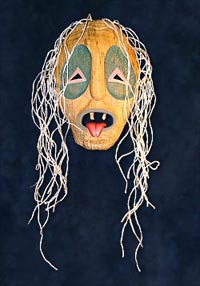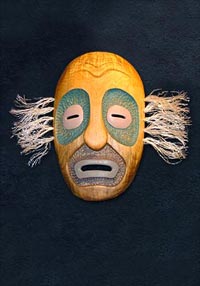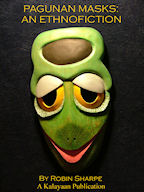Death mocking masks were danced most commonly by the old and those who were ill or recovering. Sometimes they were worn by a parent or adult to help a child deal with illness. They were thought to give the dancer strength to deal with age and health problems. They may have had a placebo or confidence building effect, or worked like the modern visualization techniques used to deal with cancer. They may also have served to reduce fear associated with death. The Pagu were not very superstitious and did not have much faith in magic. Schwartz described their use as self-witchdoctoring. They were mostly danced in small special purpose gatherings for a particular person or group such as by the elderly in the cooler winter season when sometimes they suffered from exposure during gales. The only time they were danced at the No Moon performances was when someone was celebrating recovery from a serious injury or illness.Death, provided the proper rituals were followed and the body was kept near the community, was not such a terrible thing to the Pagu. The dead were seen as passive entities. They liked to hang around but did not and could not interfere with the affairs of the living, although there were tales of ghosts; dead who had been wronged and sought to rectify things. There was the question of what happened to the dead from the Great Cataclysm whose bodies, with very few exceptions, were never found. As nothing happened and they were forgotten by the living it was assumed that they found a place in the sea to inhabit, maybe a paradisiacal island.Death mocking masks were handed down mother to daughter, father to son and those that were bequeathed by the very old, or those who had experienced dramatic recoveries, were particularly valued. Masks could acquire reputations and those whose dancers died young or shortly after receiving them might be destroyed as unlucky. Like other performing masks the type of dance depended on the wearer. Most death mocking dances were fairly slow, often to a drumbeat resembling that of the heart. Older dancers would pretend to be young and sensuous and sometimes fondle themselves.Of the two masks shown here the woman's has a movable tongue on a leather hinge which can be manipulated by the wearer's tongue or by a string. Mechanical features, eyes and mouths that open and close, are only found on some of the later masks. Like some other Pagunan dancing masks the eyeholes are set to far apart that the wearer does not have stereoscopic vision which may help induce a trance-like state and encourage the wearer to move his/her head from side to side to see everything in front. Blue, originally a scarce pigment, was typically used around the eyes.


